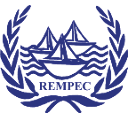Member Profile – European Union
Legal Framework
Directive 2005/35/EC (as amended by Directive 2009/123/EC) on ship-source pollution and on the introduction of penalties for infringements, addresses illegal discharges in the marine environment. It incorporates the MARPOL standards (Annexes I and II) in EU law and provides that any intentional or seriously negligent infringement of those standards, whether in the coastal waters of Member States or on the high seas shall be effectively dealt with and should even be regarded as a criminal offence. By requiring Member States to implement effective, proportionate and dissuasive penalties for infringement of the MARPOL rules, the Directive provides an additional disincentive for ship operators to illegally discharge into the sea.
http://eur-lex.europa.eu/legal-content/EN/ALL/?uri=CELEX:32005L0035
Directive 2000/59/EC on port reception facilities for ship-generated waste and cargo residues aims at ensuring a consistent reduction in marine pollution by requiring provision of adequate waste reception facilities in all EU ports as well as the mandatory delivery of all ship generated waste before ships are allowed to depart from an EU port. The Directive is currently being revised with the aim of improving the availability of adequate facilities, as well as the enforcement of the mandatory delivery.
http://eur-lex.europa.eu/legal-content/EN/ALL/?uri=CELEX:32000L0059
Directive 2008/56/EC establishing a framework for community action in the field of marine environmental policy (Marine Strategy Framework Directive) aims at achieving Good Environmental Status (GES) of EU marine waters by 2020. The Directive aims at addressing the cumulative impact of human activities on marine environment. GES, inter alia, means that human activities introducing contaminants into the marine environment do not cause pollution effects.
http://eur-lex.europa.eu/legal-content/EN/TXT/?uri=CELEX:32008L0056
Directive 2004/35/EC of the European Parliament and of the Council of 21 April 2004 on environmental liability with regard to the prevention and remedying of environmental damage establishes a framework for environmental liability based on the polluter pays principle, with a view to preventing and remedying environmental damage. Under the Directive, environmental damage is defined as, inter alia, direct or indirect damage to the environmental status of marine waters covered by the Marine Strategy Framework Directive. The Directive excludes from its scope pollution incidents covered by international conventions addressing specific types of shipping activities, such as carriage of persistent oil in tankers, or carriage of hazardous and noxious substances, or specific types of pollution damage, such as bunker oil pollution from ships.
http://eur-lex.europa.eu/legal-content/EN/TXT/?uri=CELEX:02004L0035-20130718
Operational Structure
MENELAS contact points in the European Commission:
Maritime Safety Unit DG MOVE
E-mail: MOVE-MARITIME-TRANSPORT-AND-SAFETY@ec.europa.eu
Website: http://ec.europa.eu/transport/modes/maritime/safety/actions_en.htm
Policy officers:
Anna Bobo-Remijn
Maik Schmahl
The European Maritime Safety Agency (EMSA) has been given operational tasks in the field of illicit discharges from ships. In particular, Article 2 paragraph (f) of Regulation (EC) No 1406/2002 of the European Parliament and of the Council of 27 June 2002 establishing a European Maritime Safety Agency states that the Agency shall facilitate cooperation between the Member States and the Commission … in improving the identification and pursuit of ships making unlawful discharges in accordance with Directive 2005/35/EC of the European Parliament and of the Council of 7 September 2005 on ship- source pollution and on the introduction of penalties for infringements.
Website: http://www.emsa.europa.eu/operations.html
Project officer at EMSA:
Marc Journel
Surveillance Operations
Clean SeaNet:
EMSA operates CleanSeaNet, a satellite-based oil spill surveillance and vessel detection service.
It offers assistance to participating States for the following activities:
- identifying and tracing oil pollution on the sea surface
- monitoring accidental pollution during emergencies
- contributing to the identification of polluters
The CleanSeaNet service is based on radar satellite images, covering all European sea areas, which are analysed in order to detect possible oil spills on the sea surface. When a possible oil spill is detected in national waters, an alert message is delivered to the relevant country. Analysed images are available to national contact points within 30 minutes of the satellite passing overhead.
The service, which is integrated into national and regional pollution response chains, aims to strengthen operational responses to accidental and deliberate discharges from ships, and assist participating States to locate and identify polluters in areas under their jurisdiction.
Vessel detection is also available through the CleanSeaNet service. When a vessel is detected on in a satellite image, the identity of the vessel can often be determined through correlating the satellite data with vessel traffic reports. This increases the likelihood that a State will be able to determine which vessel is polluting and take action (e.g. verifying the spill, inspecting the vessel on entry into port).
Each coastal State has access to the CleanSeaNet service through a dedicated user interface, which enables them to view ordered images. Users can also access a wide range of supplementary information through the interface, such as oil drift modelling (forecasting and backtracking), optical images, and oceanographic and meteorological information.
http://www.emsa.europa.eu/csn-menu.html
SAFEMED III:
In the context of the European Commission's SAFEMED III programme, the provisions of EMSA’s Integrated Maritime Data Environment (IMDatE) to the SAFEMED III beneficiary countries will enhance traffic monitoring in the region as well as improve the capabilities of detecting and, consequently, responding to oil spills in the Mediterranean sea. The IMDatE platform is configured to provide users with wide range of information: satellite imagery and potential oil spills detected by CleanSeaNet; ship data (ship particulars information for each selected ship); vessel SAT-AIS information and, when shared by the users, users’ own terrestrial AIS, VMS or other particular information.
Annual Reports
Relevant EMSA publications can be found under:
http://www.emsa.europa.eu/publications/information-leaflets-and-brochures.html

